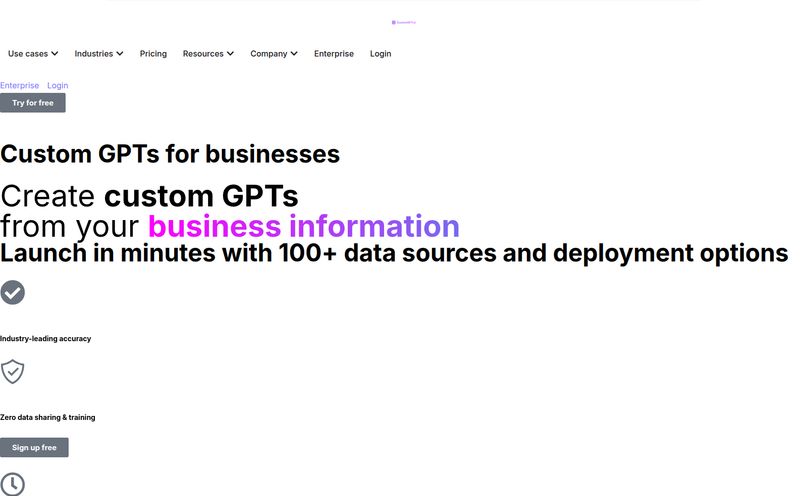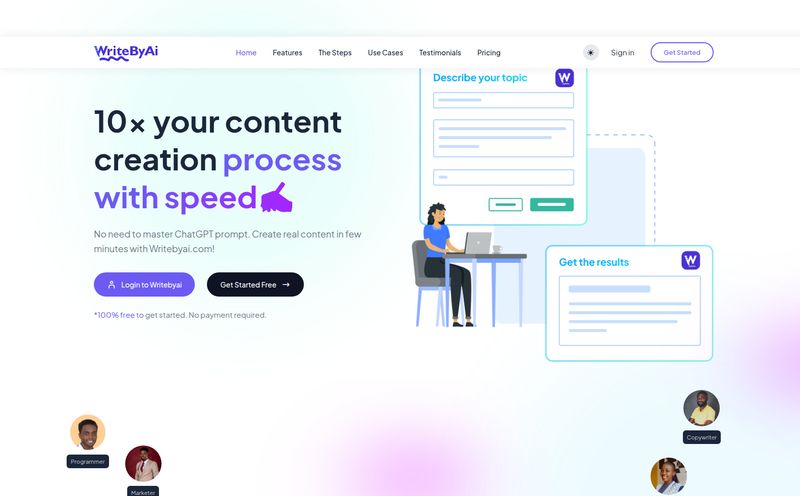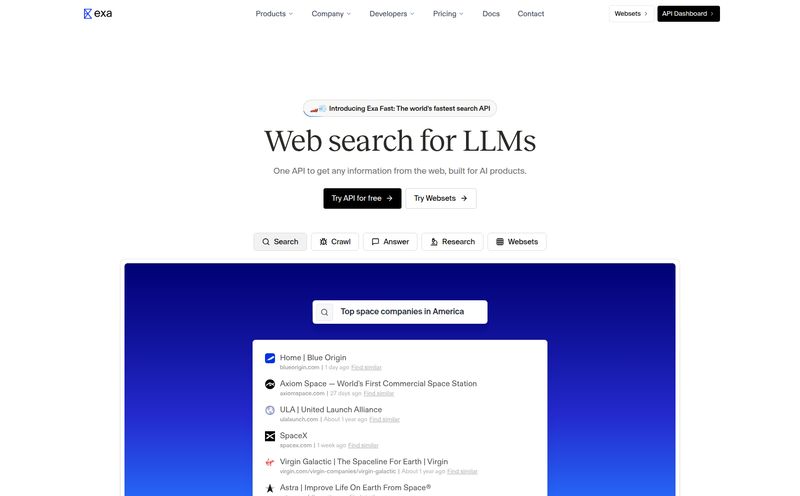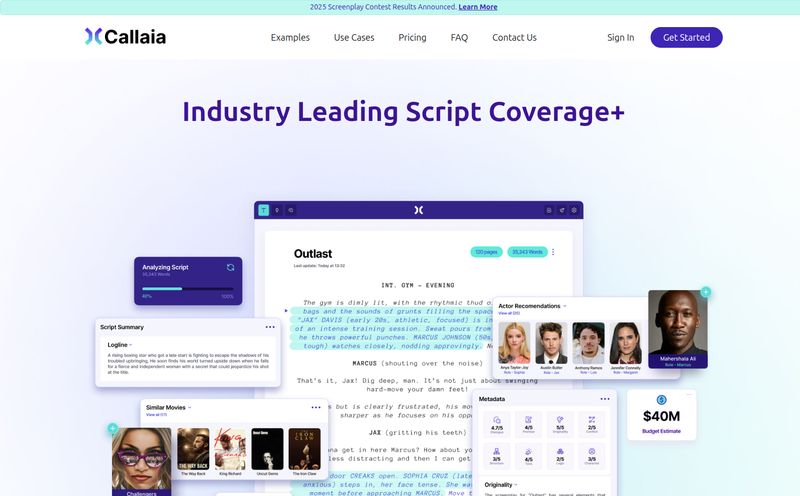Every company I’ve ever worked with, from scrappy startups to behemoth corporations, has the same dirty little secret. It's a digital attic. You know the one. It's that chaotic mess of Google Drives, shared folders, old Slack channels, and a thousand forgotten PDFs. It’s where important information goes to die. Finding a specific contract detail or a key piece of feedback from a 2019 client email? Good luck. You might as well be an archeologist hunting for a lost city.
We're drowning in data, but starving for wisdom. And for years, the solution has been... well, more sophisticated folder structures. Woohoo. That’s why when I first stumbled upon a platform called The Attic AI, my inner SEO and data-nerd cynic raised an eyebrow. Another AI-powered knowledge management solution? Groundbreaking. But as I looked closer, I realized it might be a bit different. It’s not just about searching; it’s about creating a custom-built brain for your entire organization.
What Exactly is The Attic AI? (Beyond the Buzzwords)
Okay, so let's cut through the marketing jargon. At its core, The Attic AI is a platform designed to take all that messy, unstructured data—the reports, emails, chat logs, proposals, you name it—and transform it into a single, intelligent, and searchable knowledge base. Think of it less like a search engine and more like a corporate historian who has read every single document your company has ever produced and can answer questions about them instantly.
The big differentiator here is the focus on building a custom AI model. We’ve all played with public tools like ChatGPT, and they're amazing. But would you feed it your company's secret sauce? Your private financial data or proprietary R&D notes? I wouldn’t. The Attic AI’s whole premise is built on creating a secure, private AI that learns from your data and only your data. It's the difference between buying a suit off the rack and getting one tailored. The fit is just better.
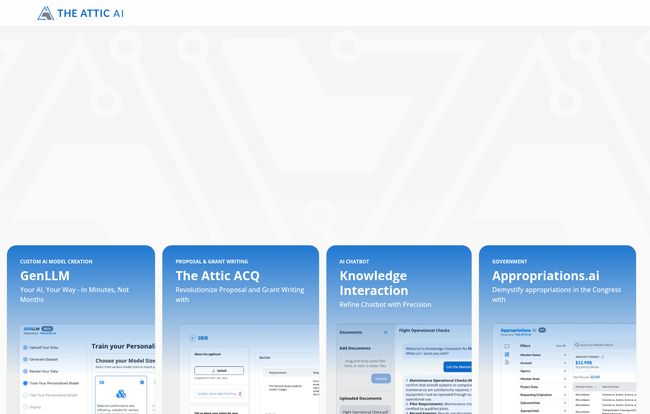
Visit The Attic AI
This approach directly tackles the biggest headache for modern enterprises: making sense of the mountains of information we generate every single day. It’s not just about finding files; it’s about synthesizing the knowledge within them.
Unpacking the Toolkit: GenLLM and The Attic ACQ
The platform isn't just one single thing. It's a collection of tools, and a couple of them really stand out from what I saw on their site.
GenLLM: Building Your Own AI Brain
This is the heart of the operation. GenLLM is their tool that lets you create and train your own Large Language Model. The promise of “Your AI, Your Way” is a bold one. The imagery on their site breaks it down into a seemingly simple process: you feed it your documents, configure some parameters, and train the model. They claim this can be done in minutes, not months, which is a massive claim in the world of machine learning.
Frankly, the ability to spin up a custom model without a team of PhDs is a game-changer. It means the AI speaks your company’s language, understands your specific acronyms, and knows the history of your projects. This is how you get truly relevant answers instead of generic, web-scraped ones. And, critically, it keeps your sensitive information inside your own secure walls. In an era of constant data breaches, that peace of mind is invaluable.
The Attic ACQ: Your New Proposal Writing Partner
Now this… this got my attention. Anyone who has ever had to write a complex proposal or fill out a government grant application knows the special kind of pain it involves. It’s a tedious nightmare of finding old content, ensuring compliance, and tailoring everything perfectly. I still have flashbacks to a 70-page proposal that consumed two weeks of my life.
The Attic ACQ is a tool specifically for this. It seems to automate the drafting process by pulling from your internal knowledge base (all those past successful proposals and product docs you fed into GenLLM). It also features AI-powered analysis and compliance checks. Imagine an assistant that can instantly surface the best-written sections from your archives and ensure you’ve checked all the boxes on a complex RFP. That’s not just saving time; that’s actively increasing your chances of winning bids. This is a very specific, high-value application that shows they understand real business needs.
The Real-World Impact on Productivity and Knowledge Management
So, what does this all mean for the average workday? It means that instead of pinging your colleague Dave for the third time to ask where the Q3 performance stats are, you can just ask your company’s AI. It means a new hire can get up to speed by having a conversation with the AI about past projects, rather than bugging senior staff for weeks.
"You're essentially giving your entire organization a perfect memory and an infinitely patient research assistant."
The security angle can't be overstated. There's a growing, and very legitimate, fear in the industry about employees pasting sensitive code or strategic plans into public AI tools. A private, self-contained system like The Attic AI completely sidesteps that risk. Your data trains your model, and it never leaves your ecosystem. For industries like finance, healthcare, or government contracting, this isn't a nice-to-have; it's a requirement.
The Elephant in the Room: Pricing and Accessibility
Alright, let’s talk about what you won’t find easily. The price tag. I went looking for a pricing page, and was greeted with a friendly “Error 404 - Sorry, This page is not available.”
Now, before you cry foul, this is pretty standard for high-end enterprise B2B software. Pricing is almost always custom. It depends on the size of your organization, the amount of data, the features you need, and the level of support. So, you won’t find a neat little three-tiered pricing table here. You’ll have to get in touch with them for a demo and a quote. It's a “if you have to ask, it’s probably not for a solo freelancer” kind of situation.
The other point to consider is the technical lift. While they market it as a “minutes, not months” setup, a platform this powerful will likely require some technical know-how to implement and manage effectively. This isn't Candy Crush. You'll want someone on your team who understands data management to get the most out of it. It’s a powerful tool, not a magic wand.
My Final Take: Who is The Attic AI Really For?
After digging into it, my initial cynicism has turned into genuine interest. The Attic AI isn't for everyone. It's not for the blogger, the small e-commerce shop, or the local bakery.
This is a serious tool for serious organizations. I'm talking about mid-to-large-sized companies, research institutions, law firms, and government agencies. It's for anyone who looks at their chaotic digital attic and sees not just a mess, but millions of dollars in lost productivity and untapped intelligence. If your business success relies on the specialized knowledge locked away in your documents, this is a platform worth investigating.
It's an investment in creating a lasting, intelligent, and secure brain for your organization. And in today’s world, that might be one of the smartest investments you can make.
Frequently Asked Questions about The Attic AI
- What is unstructured data?
- Think of it as any information that isn't neatly organized in a database. Examples include emails, PDFs, Word documents, presentation slides, chat messages, and images. It's estimated that 80% of an organization's data is unstructured, which is why it's so hard to manage.
- How is The Attic AI different from ChatGPT?
- The main difference is privacy and customization. ChatGPT is a public tool trained on a massive dataset from the internet. The Attic AI allows you to build a private AI model trained exclusively on your own company's internal documents, making it more secure and its answers more relevant to your specific business.
- Is my data secure with The Attic AI?
- Security seems to be a cornerstone of their platform. By creating a custom, self-contained AI model, your proprietary data is not shared with public models or third parties. It remains within your own controlled environment.
- Do I need to be a developer to use The Attic AI?
- While their marketing suggests a user-friendly interface, a platform this powerful likely benefits from having some technical oversight for initial setup and optimization. However, it appears designed to be used by non-developers for day-to-day tasks like asking questions or generating reports.
- What kind of documents can I use to train my AI model?
- You can use a wide variety of unstructured data formats, including PDFs, text files, presentations, and other common business documents. The goal is to feed it the same documents your teams currently use to capture and store knowledge.
- How do I find out about pricing for The Attic AI?
- Pricing is not publicly listed. As is common with enterprise-level software, you'll need to contact their sales team directly through their website to schedule a demo and receive a custom quote based on your organization's needs.
Wrangling the Chaos for Good
At the end of the day, the problem The Attic AI is trying to solve is one of the biggest challenges in business today. We're great at creating information, but terrible at retrieving and using it effectively. Tools that move us from simply storing data to actually leveraging its intelligence are more than just a passing trend. They represent a fundamental shift in how we work. The Attic AI seems to be a serious contender in that race, offering a compelling blend of power, privacy, and purpose-built tools. It's not about finding a needle in a haystack; it's about asking the haystack where the needle is.
